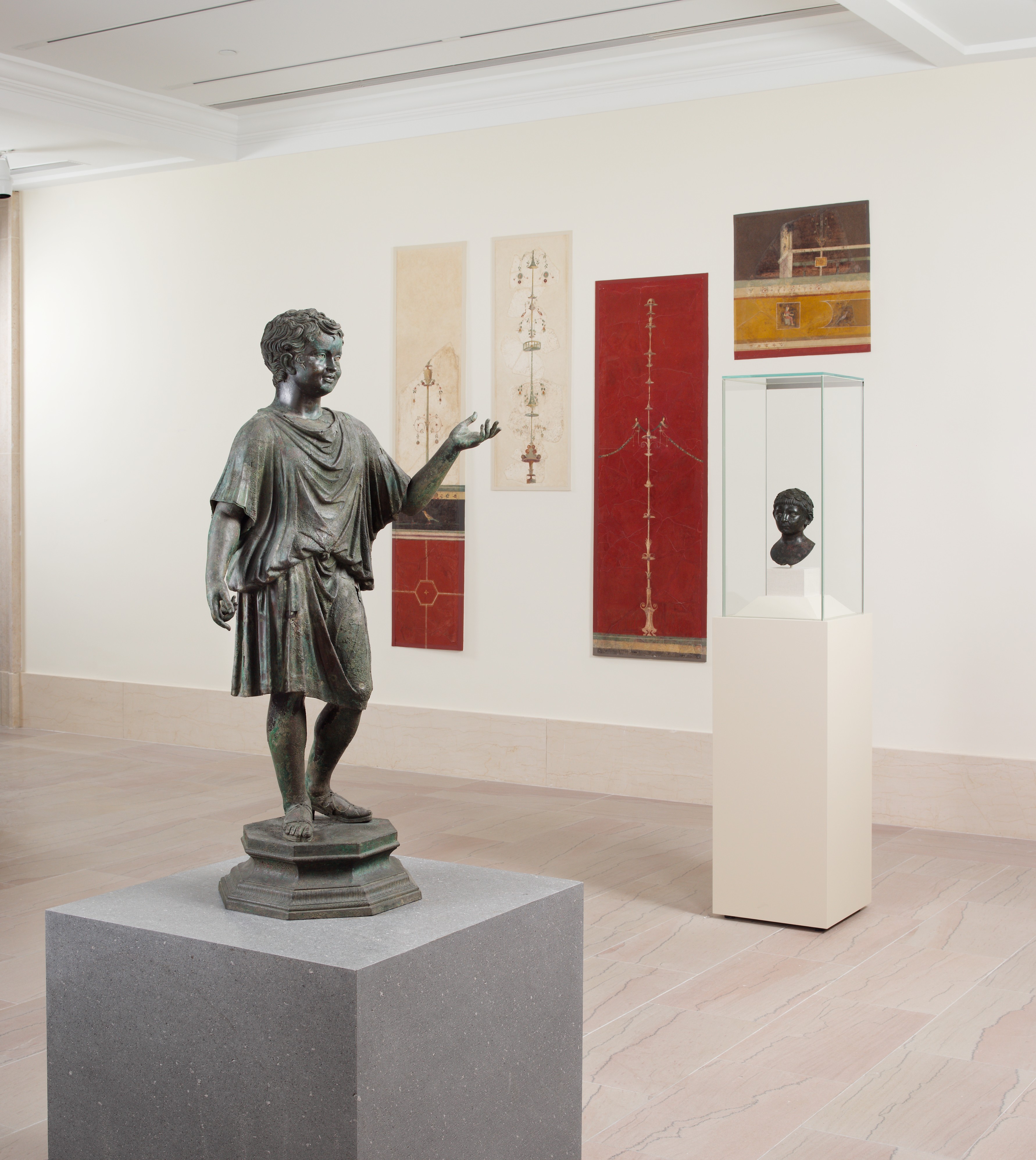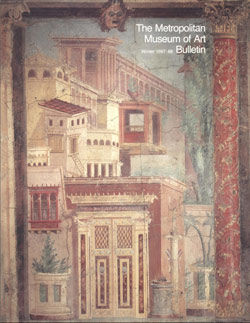Wall painting on red ground: candelabrum, from the imperial villa at Boscotrecase
This panel depicts a slender candelabrum, decorated with winged sirens, and is typical of the so-called Third Pompeian style of Roman wall painting. It comes from one of four bedrooms excavated near the modern town of Boscotrecase between 1903 and 1905 at the site of a luxury villa overlooking the Bay of Naples. The villa was probably built by Marcus Agrippa, close friend and son-in-law of the emperor Augustus, but the frescoes date to the period immediately after Agrippa's death in 12 B.C. when the villa was extensively and lavishly refurbished. The frescoes have been preserved because the villa was buried by the eruption of Mt. Vesuvius in A.D. 79.
Due to rights restrictions, this image cannot be enlarged, viewed at full screen, or downloaded.
This artwork is meant to be viewed from right to left. Scroll left to view more.





